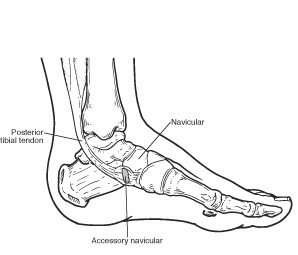Ok, so I didn’t actually RUN to my podiatry appointment, but I could have. The clinic is close enough but I decided they probably wouldn’t appreciate my sweaty, smelly presence in the exam room. You may be curious as to why this appointment was necessary in the first place. In all reality, “necessary” is a strong work. However, this is something I’ve been meaning to do for quite a while, and finally got around to acting on.
My left knee and foot have been spaces of discomfort and irritation off and on since I started running. I was diagnosed with patellar tendonitis very early on in my running journey. Several months of physical therapy, along with changes to my stride, better shoes, and much more involvement in my own well-being eventually took care of the knee pain. However, I would still sporadically feel random pain in the lower half of my leg and in arch of my foot, as well as on the top of my foot. It was never consistent or so overwhelming that I felt that I needed to rush to the doctor. At first, I chalked it up to the distances I was running. Arguably, I was piling on more and more miles as my addiction increased, so I assumed some aches and pains came with the territory. The pains would come and go throughout my run, and they typically dissipate during my recovery as my legs deal with the 20 or 30 miles I just put on them. However, the one mystery I was never able to account for was the fact that the pain only ever arrived in my left foot. I could finish a 50k or 50-mile run and my right leg/foot would feel fresh, but my left leg/foot would be killing me. This left me curious enough that I felt like a visit to the podiatrist was in order.
I was pleasantly surprised by the demeanor and openness of the doctor I visited. I explained that I was an endurance athlete, and that seemed to be enough information for him to understand that rest and limiting my mileage wasn’t really an option I would be considering. I knew the tendonitis was gone, and he screened me for plantar fasciitis, which was luckily a no-go. After watching me walk, examining my feet, and testing for sore spots, he left the room for a moment. He came back and handed me a sheet of paper, and indicated that he reasoned he had identified my issue. A quick look at my x-rays confirmed his suspicions. Apparently, my left foot was host to an extra bone!

The accessory navicular is an extra bone or piece of cartilage located on the inner side of the foot, just above the arch. It is incorporated within the posterior tibial tendon, which runs down the leg and attaches in this area. Although you are born with this congenital condition, many folks never realize it exists. However, it can become painful when you are more active, especially since that tendon is getting more use than it normally would. The intense pain from the light pressure it placed on the area made it quite clear that a diagnosis of accessory navicular syndrome was spot on.
We talked about options for treating the issue, and he recommended I begin with a pair of orthodics. Much of the pain when I run is the result of slight supination that causes the tendon to rub over the accessory navicular and cause irritation. I no doubt change my stride a bit to compensate for this irritation, which then leads to the random pain in other locations that end up disappearing after a while. I’m not necessarily keen on orthodics because of the potential they have for causing back issues when I’m not wearing them. However, he suggested trying “superfeet” inserts before spending money on custom inserts. I’ll probably give them a try, and only use them for my running shoes. Perhaps this will limit the potential for back pain.

So, in the grand scheme of things, I’m ok with this issue. I’m always reading about other runners dealing with stress fractures and other much more serious issues, and I was thankful not to be in that category. I’m certainly not a fan of the extra bone in my foot, but it could certainly be worse! Have others dealt with ANS before? Do you use after-market inserts and have recommendations? I’m definitely all ears (and toes) for suggestions 🙂

Leave a comment